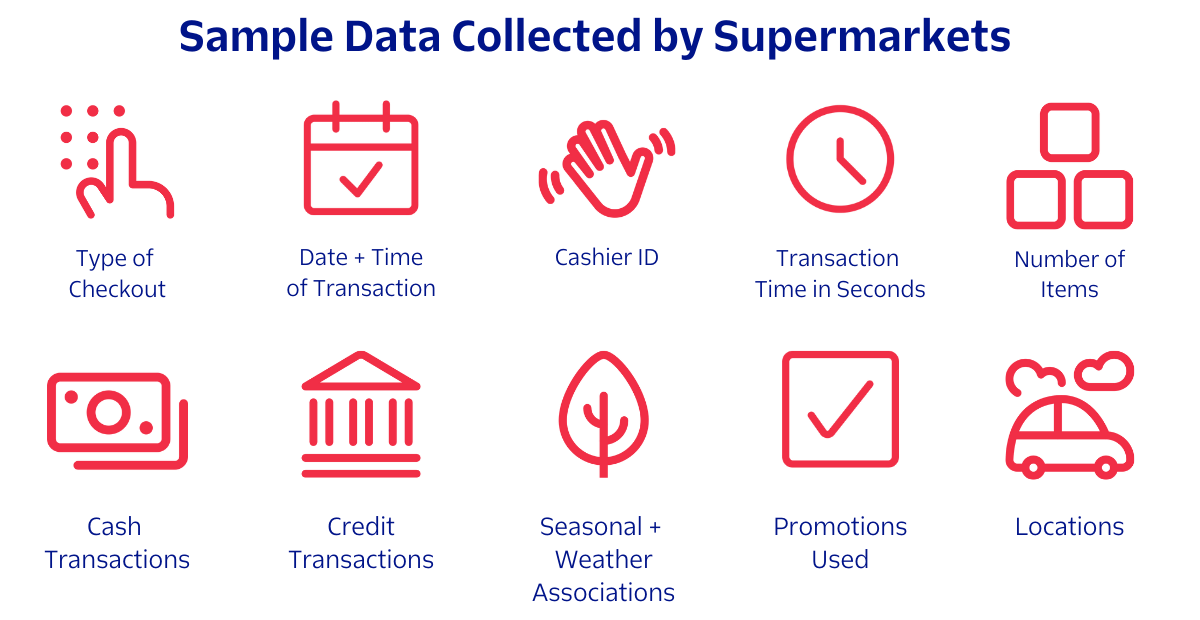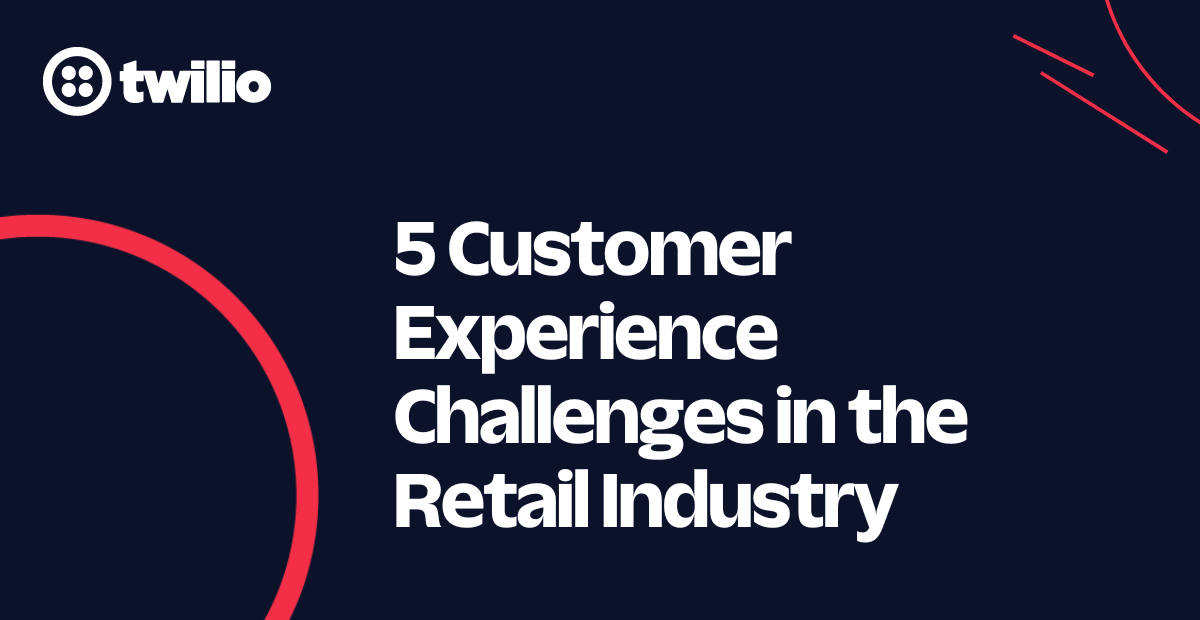Collect Better, More Valuable Retail Customer Data
Time to read: 6 minutes

Before the pandemic, I exclusively shopped at a grocery store chain in person. I signed up for an account to activate lower prices when I shopped. Obviously, I knew I was exchanging discounts for data. The chain was now able to track my purchases every time I associated my phone number with my grocery purchase, but it was worth it to me. In the next evolution of my grocery store journey, I dabbled in grocery delivery. But since the grocery store was nearby, I couldn’t justify the cost. So the data they collected about my location and associated purchases was limited.
As the pandemic dawned, going into the supermarket became a potential hazard, and grocery pick up became a no-brainer for me and so many other shoppers. My preferred grocery store put my data to good use. They recommend items that I might have forgotten on my list. They can track the times we scheduled to pick up our groceries and then when we actually picked up our groceries. They are also able to track my purchases as well as my returns when a substitution is unacceptable. Now, as the imminent danger wanes, I continue to use grocery pick up because of the convenience. In exchange for that convenience, my supermarket continues to collect a host of data from me and millions of other people across the country, thanks to the service they offer.

When it comes to data collection, retailers need to ensure that they are collecting what they need to create a complete picture of their customers. You can’t do that without clean data. With clean data brands can then provide personalized experiences and recommendations that will lead to repeat purchases and brand loyalty. In fact, you can see that worked out for Tulip in the example below. They were able to leverage data for personalized customer connection and it led to some big results. But I’m getting ahead of myself.
First, let’s talk about the main questions on many retailers' minds. How do you know what to collect? And how do you collect it effectively? And why does it matter? Let’s take a look.
The difference between zero-party data and first-party data
Before we dive into the “how” about data, let’s take a look at the categories of data you might collect. Zero-party data is the latest buzzword, and for good reason. Third-party cookies are disappearing, the days of buying information about your customers are gone if you want to build a long term relationship with them. And most retailers do. Consent and transparency are the name of the game. That’s why quality data is being invested in by retailers and across businesses at large.
First-party data is defined by Jeff Lawson, Twilio’s CEO, in a recent article on the topic as the “rich customer data you collect through your customers’ interactions with your business, such as your website or app.” Whereas zero-party data is data your customers explicitly share with you, according to an article by Taylor Udell, a Senior Manager, Strategy and Analytics at Twilio.
In today’s trust-centered economy, ethically sourcing your data is key. The good news for retailers is that most are already collecting data across their ecosystems of technology. Let’s explore that a little.
Leverage all of your systems to get a complete view of your customer
According to Oracle, there are four core types of data that retailers typically collect: demographic data, behavioral data, transactional data, and attitudinal data. Each of these types of data come from a myriad of places. If you divide the data types into categories you can see that there is a clear delineation between first-party and zero-party data. Let’s take a look at what properties fit where and how you can leverage the data to help optimize customer acquisition and lifetime customer value.

First-Party Data
- eCommerce Websites - Use completed shopping information, abandoned carts, after hours shopping habits and account login information
- Apps Interactions - Understand how customers interact with notifications, collect curbside shopping data
- In-store Monitoring - Capture the flow of traffic, customer interactions with smart mirrors
- Contact Centers - Understand customer sentiment, products they’re calling about, number of interventions
- Chatbots - Capture chat topics that your customers reach out about.
Zero-Party Data
- Survey responses - Collect answers from surveys on product or service-specific issues
- Product quizzes - Use interactive customer experiences like quizzes to provide product or trend suggestions
- Preference centers - Collect customer’s preferred channel of interacting, expressed topic interest, and ideal types of content they are served
From data to decisions
Best-in-class organizations are centralizing insights into dashboards that provide key performance indicators for retailers. What retailers will truly benefit from is being able to cross the different sources of data and the different types of data to build out insights that serve the business.

Better retail customer data collection in action
Tulip is a SaaS company driving the digital transformation of retail with a platform that includes a suite of cloud-based solutions designed to help retailers with in-store and online operations, customer communication, and tracking customer journeys. They understand that the relationship between in-person and online shopping is constantly evolving, and that those changes have only accelerated in the wake of the pandemic. Still, it would be naive to assume that online shopping will entirely replace brick and mortar stores. Each mode of shopping offers unique benefits, so it’s important to maximize the customer engagement, regardless of how they prefer to shop.
One-on-one customer interactions
Tulip’s solution builds out from one central principle: one-on-one customer interactions. Clienteling, one of the first products Tulip launched, gathers a shopper’s history, which empowers even the newest sales associates to provide personalized, VIP-level service. Retailers rely on this platform to build better connections with their customers, and in turn their customers build trust in a brand that can help them with their unique needs.
When engaging with clients or potential clients, one-on-one interactions prove time and time again to be the most effective way to communicate. Every marketing manager knows that open rates on mass emails can easily fall into single digits, and less than 5% of those who do open the email will actually read or click through the message. That clearly needed to change.
Bolstering Tulip’s personalization
Twilio worked with Tulip to develop a new tool that makes calling and texting seamless, intuitive, and secure. Designed with the end user – retail sales associates – in mind, Tulip needed a tool that would effortlessly integrate into their existing platform while offering a genuinely personalized service. The updated platform centralizes contacts, customer interactions, and shopping history, while providing masked phone numbers to each sales associate to interact directly with customers. While this type of communication is digital, it is deeply personal in nature. Both parties understand they’re speaking with a real human being, and especially with opportunities for face-to-face engagement have been a welcome change for customers. (Digital interactions also offer the benefit of being able to immediately and automatically feed new information from a conversation into that customer’s profile.)
Tulip was able to integrate Twilio Voice and Messaging into their existing platform, avoiding the lengthy, frustrating process of building the capabilities from scratch. Moreover, the sales associate would never even know Twilio was part of the process. Twilio’s APIs map directly into Tulip’s existing software platform, so the end users receive a better, more comprehensive product, without any obstacles or new training required.
The power of diversifying message delivery
This easy-to-use platform has been a game changer for retailers. It allows them to interact with customers directly, in their preferred format, and the results clearly show that these interactions are more effective. Unlike emails, text and voice messages sent through Tulip’s Twilio-powered platform have a 30% open rate, with a conversion rate as high as 9.1%. Creating authentic customer interactions at scale can be a logistical nightmare, especially for retailers with a national or global presence. Rather than building this infrastructure from scratch, Tulip leveraged Twilio APIs to build these key functionalities directly into their software platform. The end results are clear: deeper engagement, happier customers, more efficient sales, and better conversion rates.
Take good care of your data, your customers
Data is a critical piece of your strategy, so protecting that asset and ensuring that you don’t squander trust is going to serve you well. And turning those data points into insights can drive lower cost of acquisition and more loyal customers.
Related Posts
Related Resources
Twilio Docs
From APIs to SDKs to sample apps
API reference documentation, SDKs, helper libraries, quickstarts, and tutorials for your language and platform.
Resource Center
The latest ebooks, industry reports, and webinars
Learn from customer engagement experts to improve your own communication.
Ahoy
Twilio's developer community hub
Best practices, code samples, and inspiration to build communications and digital engagement experiences.


